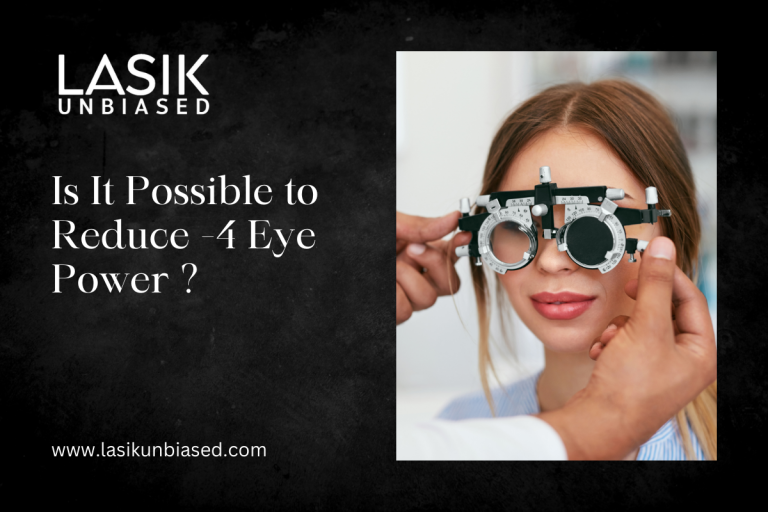A prescription of -4.00 in your eyes typically indicates moderate myopia (nearsightedness), meaning you have difficulty seeing distant objects. Suppose you are wondering whether reducing this level of refractive error is possible. In that case, the good news is that various methods can help manage, reduce, or even eliminate the need for corrective lenses, depending on your age, eye health, and lifestyle. While removing a prescription like -4.00 may not always be possible without surgery, there are multiple ways to improve your vision and reduce your dependency on glasses or contact lenses.
Corrective Lenses
The most common and traditional way to address a -4.00 eye power is through corrective lenses, such as glasses or contact lenses. These devices do not reduce the refractive error, but help compensate for it by bending light to focus on the retina, allowing clearer vision. Although glasses or contacts can correct the vision temporarily, they do not offer a permanent solution to reducing eye power. However, they are essential in managing your condition and maintaining optimal vision while exploring other treatment options.
LASIK Surgery
LASIK (Laser-Assisted in Situ Keratomileusis) is one of the most popular surgical treatments for refractive errors like nearsightedness. In patients with -4.00 eye power, LASIK has been shown to reduce or even eliminate the need for corrective lenses in many cases. LASIK is generally considered safe and effective for people with moderate myopia, and most patients experience significant improvements in vision, often achieving 20/25 vision or better.
While LASIK surgery can provide permanent results, it is unsuitable for everyone. The ideal candidates are typically over 18 years old, have stable vision for at least one year, and have no other eye conditions, such as cataracts or glaucoma. If you are considering LASIK, consult an experienced ophthalmologist to determine if this is the right option.
SMILE Surgery
SMILE (Small Incision Lenticule Extraction) is another advanced laser eye surgery designed to treat refractive errors like myopia. In SMILE surgery, the femtosecond laser creates a small lenticule (a disc of tissue) inside the cornea, which is then removed through a tiny incision. This method offers a minimally invasive approach to vision correction with fewer risks than LASIK, such as a lower risk of dry eyes. SMILE surgery is particularly beneficial for people with moderate nearsightedness, including those with a prescription of -4.00. Like LASIK, SMILE can provide lasting results and significantly reduce or eliminate the need for glasses or contact lenses.
While SMILE offers many advantages, it may not suit those with high prescriptions or thin corneas. A consultation with an ophthalmologist is necessary to evaluate your candidacy for SMILE surgery.
Orthokeratology (Ortho-K)
Orthokeratology, or Ortho-K, involves wearing specially designed contact lenses overnight that temporarily reshape the cornea to reduce refractive error. This non-surgical method temporarily improves vision, lasting a day or two. For individuals with -4.00 eye power, Ortho-K lenses may help reduce the need for glasses or contact lenses during the day. However, this method requires consistent use of the lenses each night, and the effects wear off if the lenses are not worn regularly.
Ortho-K is an excellent option for people who wish to avoid surgery or are not eligible for procedures like LASIK. It is commonly used for children and young adults whose vision is still changing and for individuals who have active lifestyles or participate in sports where wearing glasses or contacts is impractical.
Vision Therapy
Vision therapy is a non-surgical, personalized treatment program designed to improve visual skills and reduce refractive errors. It is often used with other treatments for eye strain, focusing difficulties, or eye coordination problems. Vision therapy may not directly reduce a prescription of -4.00, but it can improve the functioning of the eyes and potentially reduce the need for corrective lenses in some instances.
Vision therapy includes exercises that target specific eye muscles and improve visual processing. While it may not offer a dramatic reduction in eye power for moderate myopia, like -4.00, it can help improve your eyes’ overall health and performance, which may support other vision correction methods.
Natural Methods and Eye Exercises
Some people seek natural methods or eye exercises to reduce their eye power. While no scientifically proven evidence suggests that exercises can significantly reduce refractive errors like myopia, certain practices such as eye relaxation techniques, focusing exercises, and increasing outdoor activities may contribute to maintaining healthy vision and preventing further deterioration of eye health.
Spending more time outdoors and engaging in activities like reading or focusing on distant objects can help reduce eye strain. Although these practices may not directly reduce a prescription of -4.00, they may help prevent the condition from worsening over time.
Lifestyle Changes to Support Eye Health
Maintaining healthy vision requires more than just correcting refractive errors. Adopting a lifestyle that supports eye health can help prevent further damage and maintain optimal vision. Eating a nutritious diet rich in vitamins and minerals that support eye health, such as vitamins A, C, and E, omega-3 fatty acids, and antioxidants, is essential for overall eye care. Additionally, reducing screen time, taking regular breaks from prolonged close-up work, and using proper lighting can all help reduce eye strain and fatigue.
Regular eye check-ups with an ophthalmologist are also crucial for monitoring changes in your vision and addressing issues before they become more serious.
While reducing a prescription of -4.00 may not be possible without surgical intervention, several effective options can help improve vision and reduce dependence on corrective lenses. LASIK and SMILE surgeries are both viable options for those with moderate myopia, offering lasting results and minimal recovery times. Orthokeratology provides a non-surgical alternative to help reduce the need for glasses or contacts. Vision therapy and lifestyle changes can support eye health and improve visual function, though they may not directly affect eye power.
Suppose you are considering ways to reduce your eye power. In that case, it is essential to consult with an experienced ophthalmologist to determine the best approach based on your individual needs, age, and eye health.


